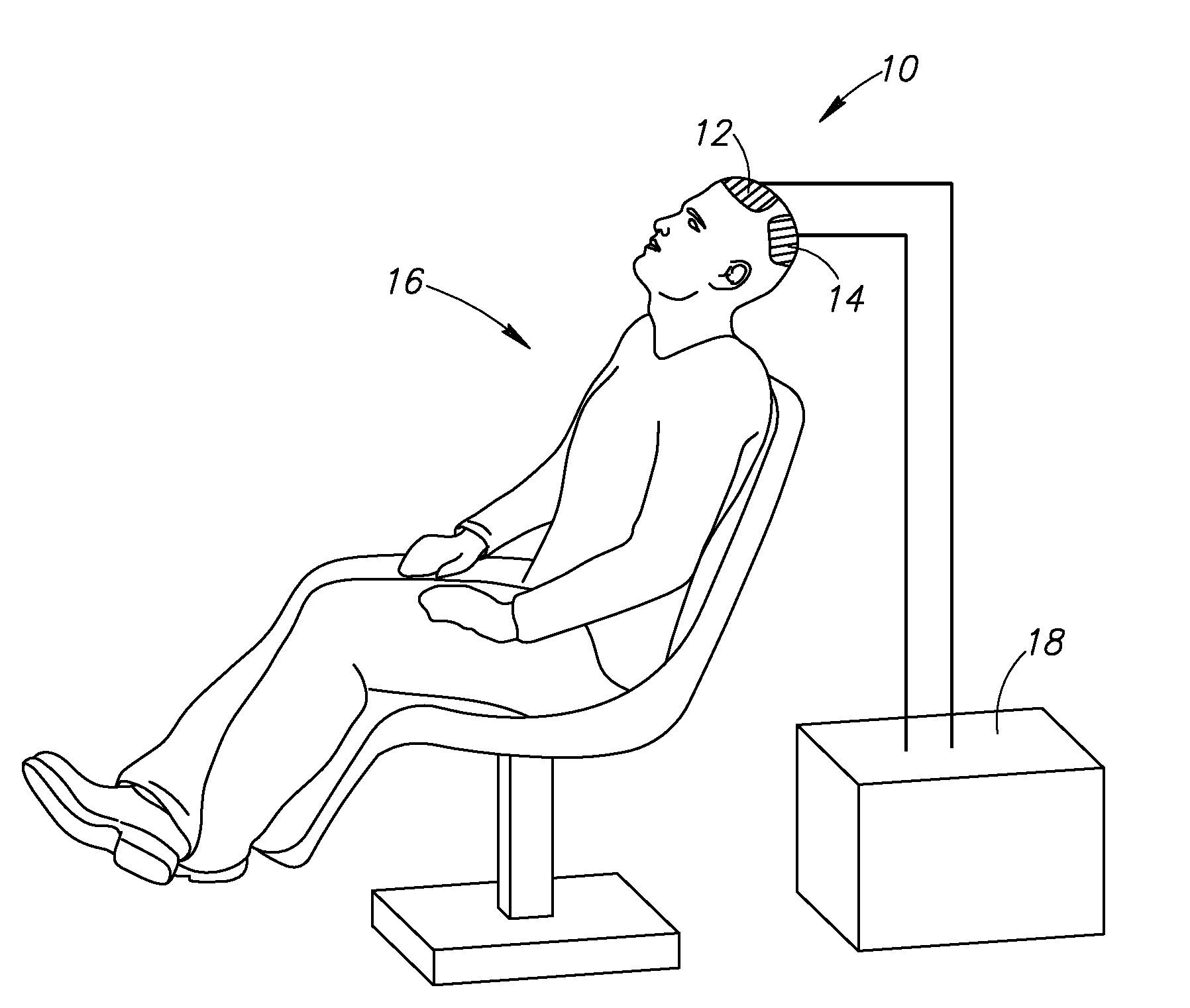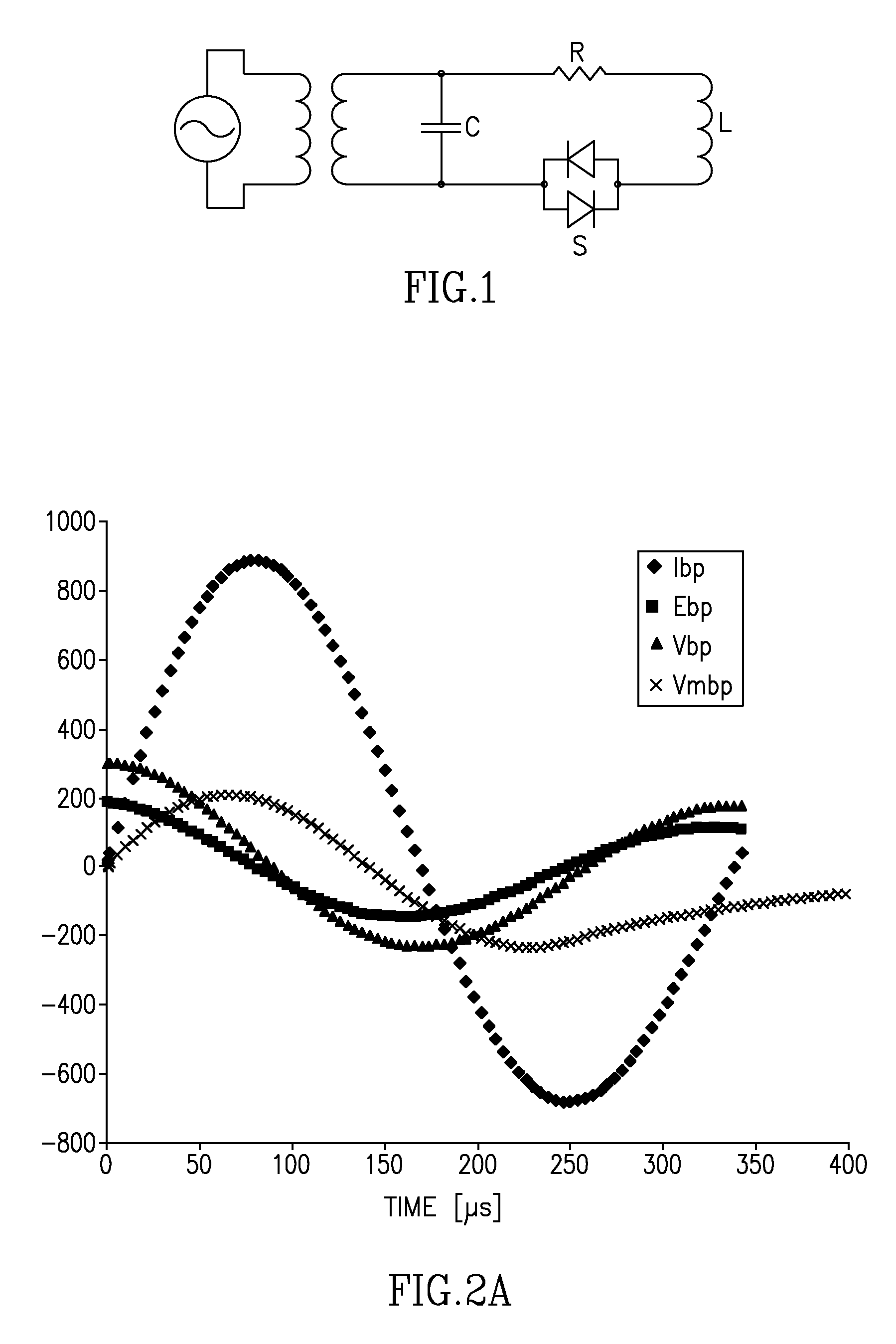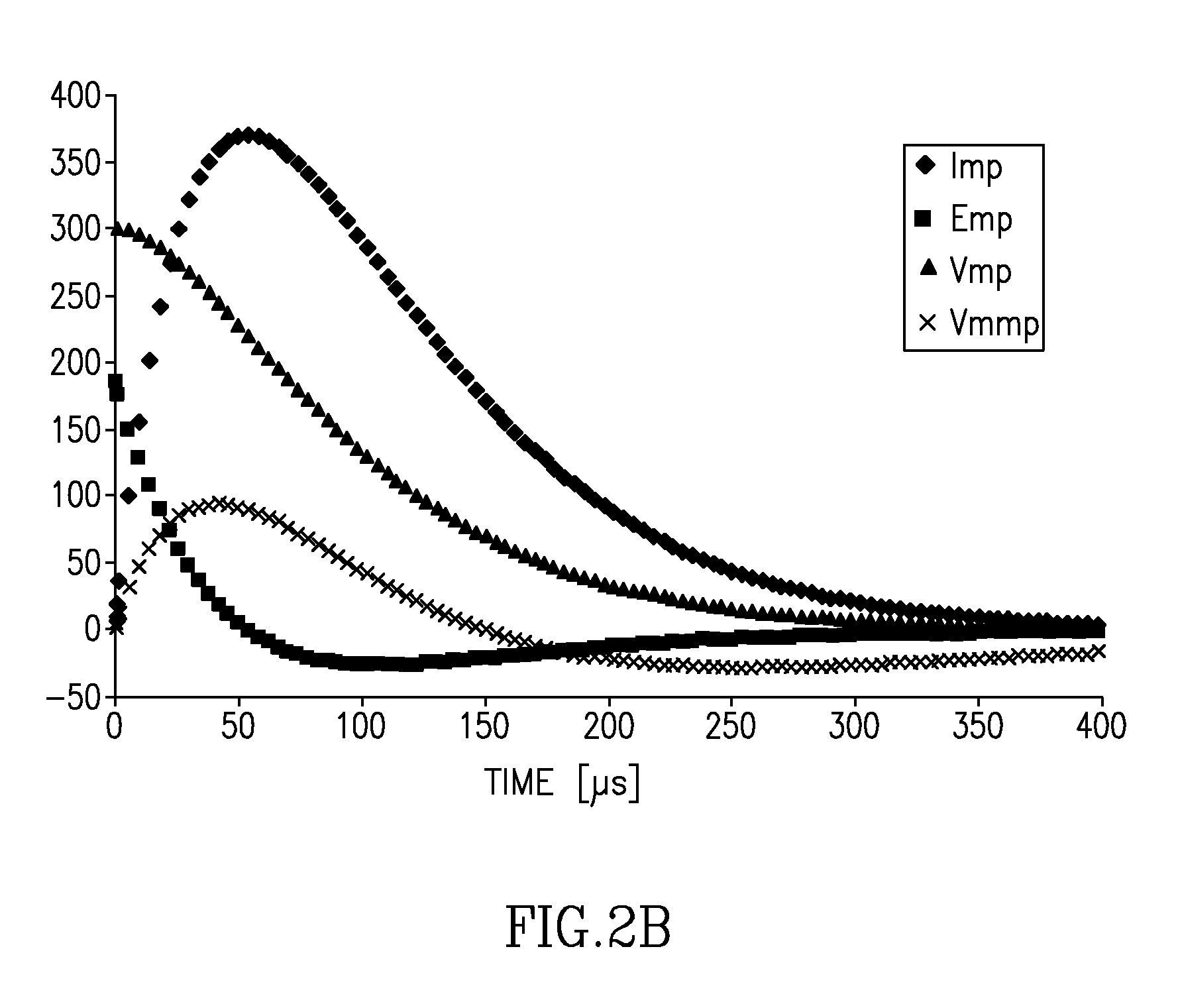Systems and methods for controlling electric field pulse parameters using transcranial magnetic stimulation
a technology of transcranial magnetic stimulation and pulse parameters, which is applied in the field of systems and methods for controlling electric field pulse parameters using transcranial magnetic stimulation, can solve the problems of transient limited ability to repeat tms in this method, and high energy consumption, so as to reduce voltage spikes and switching losses, reduce heating, and reduce energy consumption
- Summary
- Abstract
- Description
- Claims
- Application Information
AI Technical Summary
Benefits of technology
Problems solved by technology
Method used
Image
Examples
example 1
[0066]In one non-limiting example, capacitor C1 has capacitance C=25 μF, coil L1 has an inductance of 150 μH, coil L2 has an inductance of 16 μH, the resistances R1 and R2 in the two circuits are both 0.05 Ohm, and two of the switches (Z1a and Z2b) are always closed. The timing of opening or closing of each switch is controllable by the user.
[0067]Reference is now made to FIG. 6, which is a graphical illustration showing pulse shapes which may be produced upon operation of the circuit shown in FIG. 5 in accordance with the parameters of Example 1. Depicted in FIG. 6 are the current in L1 I(L1), the current in L2 I(L2), the current near the capacitor I(C1), and the capacitor voltage V(C1). In this example the capacitor is charged to an initial voltage of 300 V. Between 0 and 40 μs only Z2a is opened, allowing current flow only through coil L2. At 40 μs switch Z1b is also opened, allowing current flow through coil L1 (having the larger inductance), in a direction which is opposite to ...
example 2
[0074]In another non-limiting example, capacitor C1 has C=25 uF, coil L1 has an inductance of 16 μH, coil L2 has an inductance of 16 uH (thus, the inductances in the two coils are similar or identical), the resistances R1 and R2 in the two circuits are both 0.05 Ohm, and two of the switches (Z1a and Z2b) are always closed. The timing of opening or closing of each switch is controllable by the user.
[0075]Reference is now made to FIG. 7, which is a graphical illustration showing pulse shapes which may be produced upon operation of the circuit shown in FIG. 5 in accordance with the parameters of Example 2. Depicted in FIG. 7 are the current in L1 I(L1), the current in L2 I(L2), the current near the capacitor I(C1), and the capacitor voltage V(C1). In this example the capacitor is charged to an initial voltage of 300 V. Between 0 and 40 μs only Z2a is opened, allowing current flow only through coil L2. At 40 μs switch Z1b is also opened, allowing current flow through coil L1, in a direc...
example 3
[0077]In another non-limiting example, the parameters for capacitor C1, coils L1 and L2, and resistances R1 and R2 are the same as in Example 2. That is, capacitor C1 has C=25 uF, coil L1 has an inductance of 16 μH, coil L2 has an inductance of 16 uH (thus, the inductances in the two coils are similar or identical), the resistances R1 and R2 in the two circuits are both 0.05 Ohm. However, the timing of opening or closing of each switch is changed.
[0078]Reference is now made to FIG. 8, which is a graphical illustration showing pulse shapes which may be produced upon operation of the circuit shown in FIG. 5 in accordance with the parameters of Example 3. Depicted in FIG. 8 are the current in L1 I(L1), the current in L2 I(L2), the current near the capacitor I(C1), and the capacitor voltage V(C1). In this example the capacitor is charged to an initial voltage of 300 V. Switches Z1a and Z1b are open between 0 and 110 μs, switch Z2a is open between 0 and 60 μs, and Z2b is always closed. I...
PUM
 Login to View More
Login to View More Abstract
Description
Claims
Application Information
 Login to View More
Login to View More - R&D
- Intellectual Property
- Life Sciences
- Materials
- Tech Scout
- Unparalleled Data Quality
- Higher Quality Content
- 60% Fewer Hallucinations
Browse by: Latest US Patents, China's latest patents, Technical Efficacy Thesaurus, Application Domain, Technology Topic, Popular Technical Reports.
© 2025 PatSnap. All rights reserved.Legal|Privacy policy|Modern Slavery Act Transparency Statement|Sitemap|About US| Contact US: help@patsnap.com



